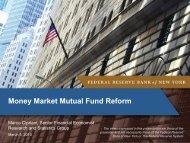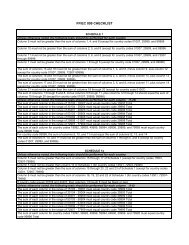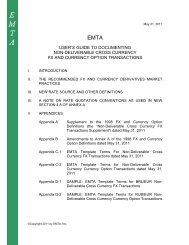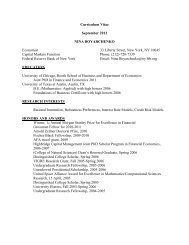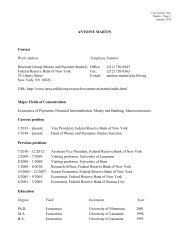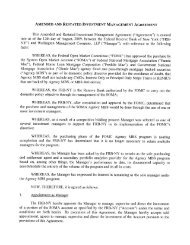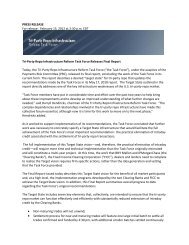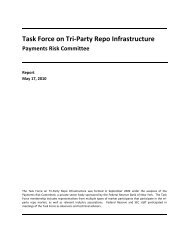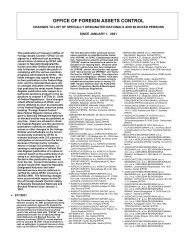Residential Foreclosures in the City of Buffalo, 1990-2000 - Federal ...
Residential Foreclosures in the City of Buffalo, 1990-2000 - Federal ...
Residential Foreclosures in the City of Buffalo, 1990-2000 - Federal ...
You also want an ePaper? Increase the reach of your titles
YUMPU automatically turns print PDFs into web optimized ePapers that Google loves.
well <strong>in</strong> this low-<strong>in</strong>come community. Surpris<strong>in</strong>gly, <strong>in</strong> fact, Ellicott-Masten demonstrated<br />
<strong>the</strong> lowest foreclosure rate on FHA purchase loans among all <strong>Buffalo</strong> communities.<br />
The association between poor loan performance and low <strong>in</strong>come may appear<br />
contradictory to our f<strong>in</strong>d<strong>in</strong>gs <strong>in</strong> Chapter 3, which show higher foreclosure rates <strong>in</strong> higher<br />
<strong>in</strong>come census tracts. However, <strong>the</strong> foreclosure rates used <strong>in</strong> Chapter 3— and generally<br />
<strong>in</strong> this report— are based on <strong>the</strong> percentage <strong>of</strong> foreclosures per hous<strong>in</strong>g unit, not on <strong>the</strong><br />
percentage <strong>of</strong> foreclosures per loan orig<strong>in</strong>ation. Because <strong>Buffalo</strong>’s lower <strong>in</strong>come<br />
communities tend to see a low volume <strong>of</strong> lend<strong>in</strong>g, <strong>the</strong>y may also show a low number <strong>of</strong><br />
foreclosures— and thus a low foreclosure rate based on hous<strong>in</strong>g units— despite<br />
comparatively poorly perform<strong>in</strong>g loans.<br />
In <strong>the</strong> previous two analyses, we exam<strong>in</strong>ed factors—<strong>the</strong> volume <strong>of</strong> lend<strong>in</strong>g and<br />
loan performance—that might have <strong>in</strong>fluenced foreclosure on <strong>the</strong> various types <strong>of</strong> loans.<br />
We now turn to <strong>the</strong> effects <strong>of</strong> <strong>the</strong> patterns found <strong>in</strong> those analyses by exam<strong>in</strong><strong>in</strong>g <strong>the</strong><br />
distribution <strong>of</strong> foreclosures by loan type. Our discussion addresses <strong>the</strong> share <strong>of</strong><br />
foreclosures on ei<strong>the</strong>r FHA or conventional loans and <strong>the</strong> share <strong>of</strong> foreclosures on<br />
purchase, ref<strong>in</strong>ance, or assumed loans.<br />
Distribution <strong>of</strong> <strong>Foreclosures</strong> between FHA and Conventional Loans<br />
Table 10 shows foreclosures <strong>in</strong> <strong>2000</strong> accord<strong>in</strong>g to <strong>the</strong> two ma<strong>in</strong> categories <strong>of</strong> mortgage<br />
loans. For <strong>Buffalo</strong> overall, 38 percent <strong>of</strong> foreclosures were on FHA loans and 59 percent<br />
were on conventional ones. This f<strong>in</strong>d<strong>in</strong>g is consistent with our results on lend<strong>in</strong>g and loan<br />
performance, <strong>in</strong> which FHA loans were found to account for 23 percent <strong>of</strong> lend<strong>in</strong>g but<br />
foreclosed at a higher rate than did conventional loans. Interest<strong>in</strong>gly, FHA foreclosures<br />
represented a much larger share <strong>of</strong> foreclosures <strong>in</strong> Rochester <strong>in</strong> 1998, account<strong>in</strong>g for 60<br />
percent <strong>of</strong> <strong>the</strong> total. This difference, as we discuss, may be due <strong>in</strong> part to a larger<br />
proportion <strong>of</strong> subprime foreclosures <strong>in</strong> <strong>Buffalo</strong>. However, if we consider only prime<br />
loans, about two-thirds <strong>of</strong> Rochester foreclosures were FHA compared with about onehalf<br />
<strong>of</strong> <strong>Buffalo</strong> foreclosures. This f<strong>in</strong>d<strong>in</strong>g appears to be attributable to a higher volume <strong>of</strong><br />
FHA lend<strong>in</strong>g <strong>in</strong> Rochester than <strong>in</strong> <strong>Buffalo</strong> ra<strong>the</strong>r than to differences <strong>in</strong> FHA loan<br />
performance. In <strong>the</strong> Rochester study, FHA loans were estimated to account for about 40<br />
percent <strong>of</strong> orig<strong>in</strong>ations, significantly more than <strong>the</strong> 23 percent we found <strong>in</strong> <strong>Buffalo</strong>. At<br />
39



